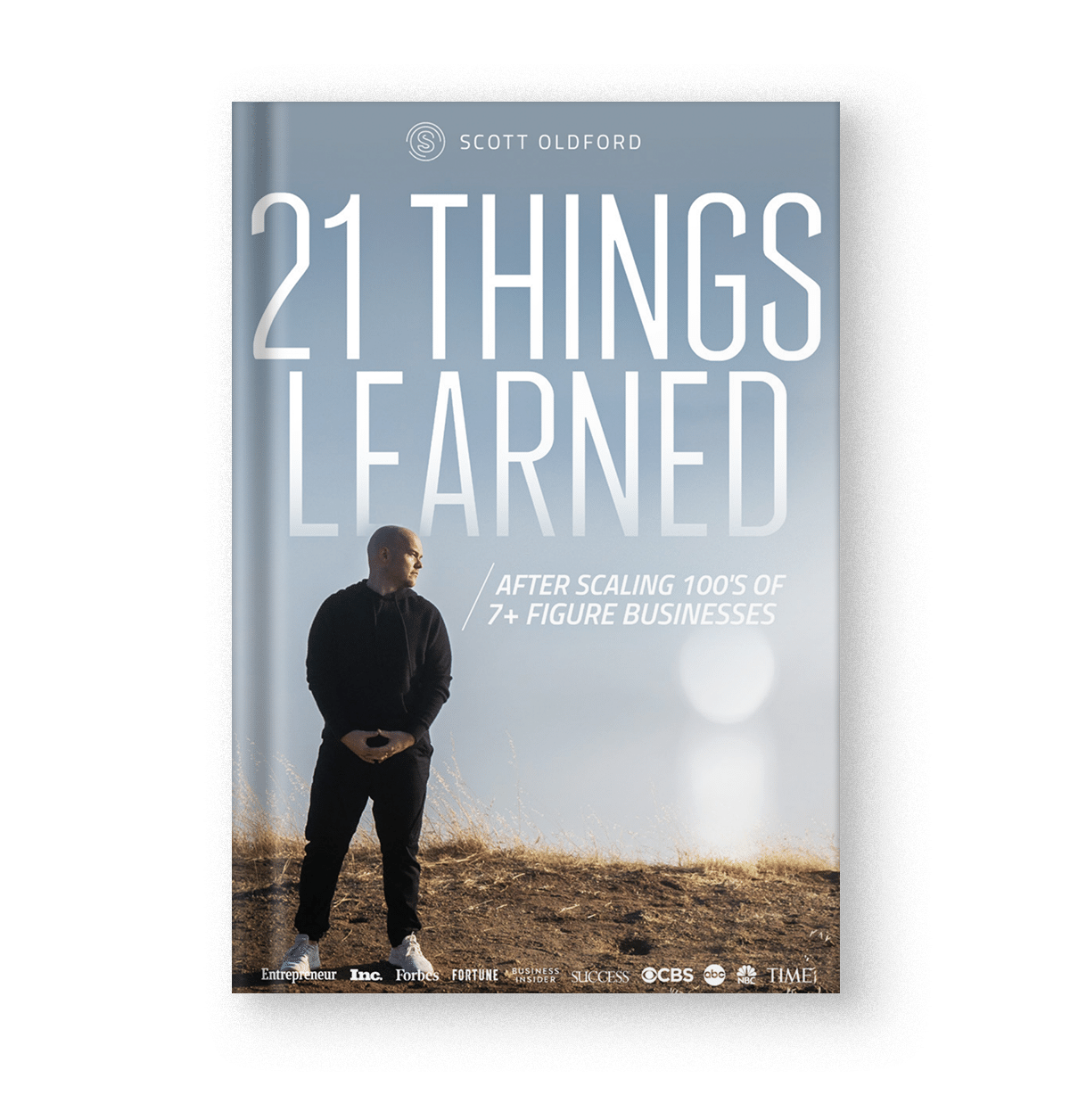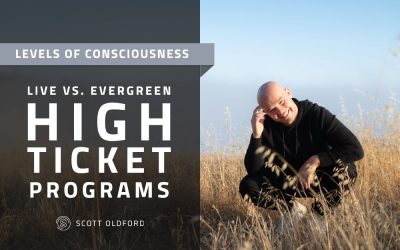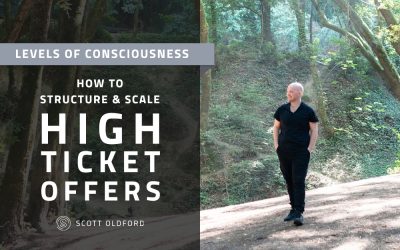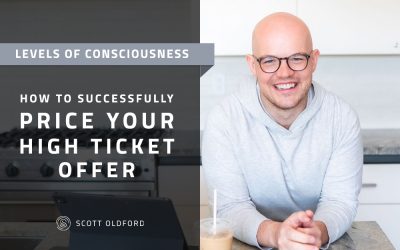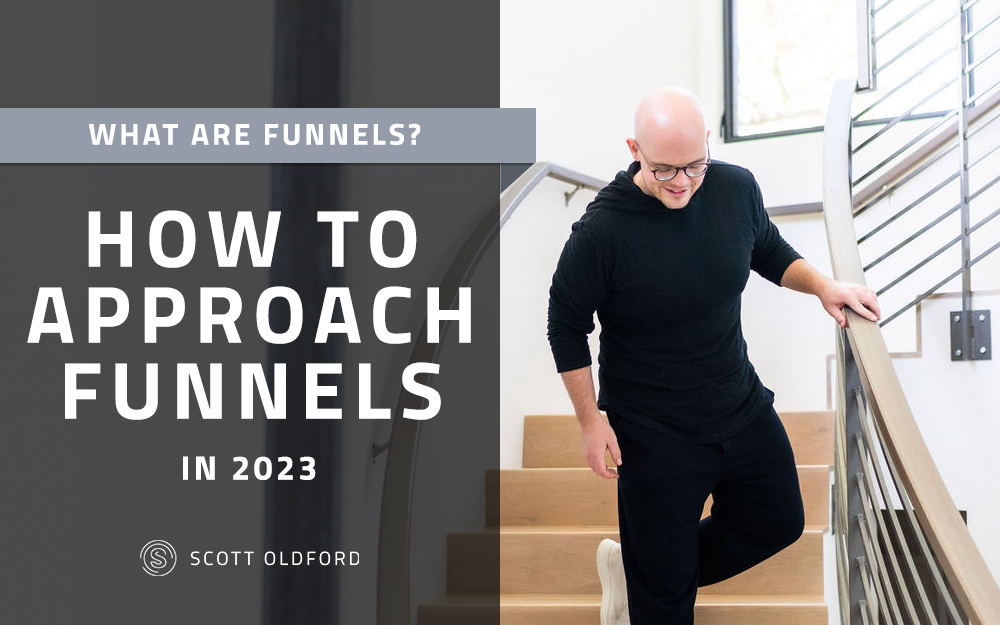
Funnels. Funnels. Funnels.
Wherever you turn online, you find people talking about funnels as the secret to get more sales.
For instance, people are always talking as if they’re just one magic funnel away from building the perfect sales process.
That’s one way of thinking about funnels, but my view of them is different than what most entrepreneurs think.
I don’t believe that you should have a one-dimensional view of funnels.
The conventional wisdom assumes that your customers consume content without contextualizing.
But the truth is that not everyone is in the same mindset when they enter your world; that’s why you need to work with them over time and move them from the Slow Lane (not knowing the process to solve their method) to the Fast Lane (wanting to work with you and want to know about your solution) at their own pace…
And then use relevancy to show them that you’re the most relevant option.
This is how you do funnels in a way such that you don’t need to be pitching all the time about your offers.
Instead, you drive people to have conversations with you, and it becomes you who decides whether you want to work with them or not.
So What Really Is A Marketing Funnel
Before we dive any deeper, we need to understand what a funnel really is.
The best way to think about a funnel is that it’s a systematic way of being able to bring someone through a series of mindset changes, show them your value…
And also allow the other person to understand where they’re at, too, so they have clarity on what makes sense for the next step of solving their pain or problem and finally get to a point to where they have a better life.
This is the best way to think about funnels, in a nutshell.
So, a marketing funnel’s job is to take somebody that has a pain or problem and bring them through the process of understanding their pain or problem and understanding the process (and methodology) to solve that pain or problem and showcase your authority and the fact that you can be trusted to solve that problem…
And that you’re the most relevant option to help them solve that problem.
Yes, there’s also software, landing pages, lead magnets, and all these different things which when done in the right order, that’s when you have a funnel.
So when you get on a landing page and enter your email address, you’re in a funnel.
Even when you watch 50% of a video, you’re now in a funnel because I can retarget you and bring you through the process of allowing you to understand your pain or problem…
… then let you see the process and methodology to help you close the gap to get to the vision you want, which is essentially the job of a funnel.
And you can make funnels as simple or as complex as you want.
It can be as simple as someone coming to your Facebook group, checking your organic posts, and then deciding to have a conversation after reading any of those posts.
If you’ve been doing online marketing for some time now, then you’ve probably seen those crazy complex funnels with a lot of scenarios to move people across the funnel and get them to make a purchase.
Are these complex funnels the solution to all your problems?
Maybe, but you wouldn’t be reading this post right now if you’d already found that perfect funnel that will make it easy to make seven figures or eight figures.
That’s why I don’t believe you’re one funnel away from X amount of millions of dollars like you’re hearing all day long. I don’t see funnels that way.
Instead, funnels for me are a way to be able to make yourself relevant and show your relevancy to the people that enter your world.
Which is why I like to call it a “relevancy funnel.”
The concept of a relevancy funnel is a much better way to think about funnels than those traditional “perfect funnels” with a lot of automations.
In all aspects of life, people generally put a lot of emphasis on things that they shouldn’t, and the same is a hundred percent true with funnels. People spend a lot of time and energy trying to get the perfect funnel and get the perfect automation.
Some of my clients love the automation and segmenting aspect of a business, but what I’ve noticed is that they wait too long before they launch their funnel and start generating cash flow, which is more important than having that perfect funnel.
That’s why in my business, and with most of the people that I work with, it’s more about simplicity and relevancy and intimacy than it is about all this technology and perfect funnels.
It’s less about the tactics and technology and more about the strategy and mindset to help you move people closer to the sale.
People put so much more emphasis on the technology and tactics than on understanding what works from a human behavior perspective, and the latter is the reason why the Relevancy, Omnipresence, and Intimacy Method works.
That’s why I don’t like the idea of “hacking” a funnel because it focuses more on the funnel and landing pages and technology than relevancy and providing true value to the people entering the funnel.
After all, the job of the funnel is to make you relevant to someone so we can start crafting dialogue with them and start having conversations that connect with them and build a community around that.
The funnel is not there to close someone.
So we’re not just hacking funnels. The question you may have in mind is…
How Do the 3-Lane Marketing Messaging & the ROI Method Work Inside Your Funnel?
Before we continue diving into funnels, I want to do a quick review of the ROI method and how it fits into the whole big picture of funnels and your business.
If you’re not familiar with my ROI method, check out this guide.
With relevancy, you become the big fish in a small pond in your industry or the Coca-Cola of your industry.
After that, you continue showing up in someone’s life (AKA become omnipresent) with the right content to showcase your relevancy and authority.
Then you utilize connection, conversation, and community to be able to draw people closer to you so that it’s really an act of love to be able to work with somebody.
It’s more like an opportunity to work with someone (and they feel the same way about being able to work with you) than it is you pitching your services and products over and over again.
This helps you create a scenario where you can go and find a group of people that are complete strangers to you, bring them towards you, share your message with them, and bring them towards a point at which you can help them.
We help people the most when they’re excited about working with us and they give us some form of energy in exchange for what’s happening.
But to help people reach this level we need to move them from not recognizing their pain to knowing the solution and then knowing that you’re the best person to help them solve that problem, AKA move them from the Sidewalk to the Slow Lane to the Fast Lane.
So how does the 3-Lane Marketing Method work with your actual funnel?
To help you understand that, let’s do a quick review of the 3-Lane Marketing Method.
People on the Sidewalk are people who need to understand their pain and problem; this is before they actually get to the point of admitting, “Okay, I have this problem and I want a process to fix that.”
That’s when they transition to the Slow Lane. In the Slow Lane, the person is in discovery mode. They’re trying to figure out what’s causing their problem/pain, and they want to understand how to solve it.
Once they understand the process to solve it, they’re in the Fast Lane. They need a solution to help them solve that problem. They want to resolve any lingering doubts or objections, and they want to make sure that you’re the person they want to work with, which then leads to conversations, and then buying from you.
What does this look like from a marketing perspective?
Inside your marketing, there are Sidewalk funnels, Slow Lane funnels, and Fast Lane funnels, and that’s what we’re going to go through in this section.
But in brief, there’s a Slow Lane funnel, or what I like to call the relevancy funnel, which brings people into the Slow Lane (these are 30-40% of the people that you’re coming across every single day).
Then there are the Fast Lane funnels or what I would call mostly “the intimacy funnel” or “the conversation funnel,” which is aimed at your top 3% warmest potential clients.
These are the people that you’re trying to get on a phone call or a webinar or get them to the point of being able to see that you have a solution and show them the offer to help them solve that problem.
And of course, we have Sidewalk funnels. This is for the remaining 50-60% of the people in the market.
And to be honest with you, you don’t have to go after them. I rarely suggest that any of my clients go after Sidewalk people unless you’re at a point in your business where you’re generating thousands or even tens of thousands of leads and you want to widen the market.
The reason why is because these people require a lot of nurturing to convince them of their pain and problem. So it’s something you probably won’t need unless you’ve got a multi-seven-figure business or even an eight-figure business.
This is how the SSF method really works inside of your funnel.
By being able to put different pieces together and move people from one lane to another at their own pace and make sure that you’re developing the funnel for the right intent of every phase, that is how you get people to be your customers without constantly pitching them a hard sell.
To help you understand how this is better than traditional funnels, let’s compare them side-by-side.
Traditional Funnel vs The Relevancy Funnel
When people think about funnels, they think about getting people to opt-in and then move them from one page to another and send emails until they finally make a purchase.
The problem with this is that it assumes that they’re in the Fast Lane, which is just 3% of the people in the market. It limits the profitability of every dollar you spend in the long term. This doesn’t create the waterfall effect (more on this later).
What ends up happening in this scenario is that you keep pushing the sale harder, but it’s not in alignment since it’s very hard to show your relevancy when you’re trying to close sales super fast.
That’s why you’re fighting to get a sale; your close rate suffers and thus your profitability as well.
I’m not saying that high-pressure sales tactics don’t work. They work, but you’ll need to pay more to acquire customers.
So even though it can work under certain circumstances, there is a much better way to do it, especially if you don’t have a quarter-million dollars a month to spend on your marketing, or if you want to have a higher earnings margin.
The high-pressure sales approach might technically be a faster approach to success, but it is not sustainable in the long term, and boy is it stressful!
My approach is always long term sustainable growth, getting 100-300% increase year after year until you reach the point of two to five million dollars of revenue per year. Then it’s more about stable growth from there.
Growth is expensive and requires thoughtful long-term planning.
It’s not about looking at one or two numbers and then bragging about how much money you made last month while your expenses gradually overtake your revenue.
That was my situation with my agency a few years back, and after being able to generate over two million dollars, I had to sell it basically for one dollar because I didn’t grow in a sustainable way.
If you don’t profit from your business, you’ll eventually want to blow it up because the return you’re getting from the work you’re putting in is non-existent in reality.
The beauty of a relevancy funnel is that you keep being omnipresent, so you keep appearing in front of that audience in a non-salesy way, so you build that connection and intimacy and create conversations…
So you get more customers over the long run, increasing your profitability from every dollar you spend now, not just adding people to a list after your sequence is finished and hoping they purchase in the future, which a lot of them won’t.
And this creates what I like to call…
The Waterfall Effect – How to Generate More Revenue Over The Long Term
Here’s the thing, the traditional funnel is going to generate you sales now or in the next week or so…
But the relevancy funnel is going to generate sales now, as well as three months from now, six months from now, fifteen months from now, and so on.
For me, I sometimes get people who invest in my mentorship after getting 200 emails where a specific email clicks and they’re finally ready to solve that pain and they now trust themselves and trust me to help them implement the solution that I’ve been talking about.
That’s why I see the business as a game–yes, it is a game after all–of being able to bring people through the waterfall effect.
People are at one of four stages. They’re either on the Sidewalk, Slow Lane, Fast Lane, or they’re a customer. You should already know this by now.
People can move from the Slow Lane to the Fast Lane to being a customer in a matter of days, which usually happens when they’re at the end of the Slow Lane and they’re so agitated by their pain that they consume content ravenously and your content really clicks with them, and then they become a customer.
It can happen even in a day if you do a webinar, which usually isn’t intended for the Slow Lane, but that’s what most people do.
For others, it’ll take months to move them from the Slow Lane to the Fast Lane, and maybe multiple opportunities (like launches of different products) till they become a customer.
This is the situation in my business, and most of the time it has less to do with me and more to do with the mindset of the potential client.
My job is to continually show up in front of that person to bring their attention to what’s going on and make sure they understand the pain, the process, and the solution, and that they feel confident that they can do it and that I can help them in the process to solve that pain.
At some point, it’s going to be mostly about the other person being ready for that next step and being able to make the commitment, as we already said in the intimacy section.
And this is where the waterfall effect comes into place, which demonstrates the beauty of the ROI method.
To help you understand the concept of the waterfall, let’s use some numbers and averages to simplify things.
Let’s say I get out and get 10,000 leads to my business. Let’s say 6000 of those are on the Sidewalk (I don’t go after the Sidewalk and I wouldn’t recommend you do it either, as I already mentioned above, but just for the sake of argument, let’s assume that’s what we’re looking at). 3,700 are in the Slow Lane and 300 are in the Fast Lane.
Relevancy and omnipresence will help you to get people to change lanes quickly so they start moving from the Sidewalk to the Slow Lane and from the Slow Lane to the Fast Lane and from the Fast Lane to being customers.
This will help you have the waterfall effect where people who were in the Slow Lane a month or two before or even a year before are now in the Fast Lane and are ready to buy.
The best part is that you keep adding more people to your list every month, so you have Fast Lane people who just signed up, and then Fast Lane people who signed up a few months ago. This is how you create exponential growth in your business, increase your profitability, and scale faster. So the dollar you spend today in marketing gives you $1.5-2 in the next seven days, $5 in the next ninety days, and $20 in the next 365 days, for example.
That’s a much better approach than going after the 300 people who are in the Fast Lane, pressuring them into purchasing from you, and then going after a new set of people, and so on.
Yes, you can make a profit that way, but it’ll take you a lot of time and money to perfect different things in the funnel, and your profits won’t be the same, which will hinder your ability to grow and scale.
I started my online business in 2015, but since early 2017 I started to experience the hockey stick curve where my business revenue was growing upwards exponentially (i.e., not by just a small percentage) every year.
I’m sure this is a better situation than trying to squeeze the few people who are in the Fast Lane into purchasing. I can see the rewards now.
While I’m putting money back into advertising and marketing, I don’t need to sacrifice my profitability the way a lot of other entrepreneurs do when they scale, and I’m still experiencing the hockey stick effect.
In 2015, I made around half a million. In 2016, it was three million dollars. In 2017, I was close to seven million and in 2018 & 2019 I was at about twelve million.
Who knows, maybe we’re just in the early process in the hockey stick curve, and my numbers could increase a lot more in the future.
The reason my growth was exponential was that I was able to build multiple businesses in the past year, and I have more businesses to build in the upcoming year. And I was able to achieve this by focusing on building an audience.
When you use the relevancy funnel, you’re building an audience because you focus on the intimacy part, being relevant to that group and showing up consistently, which will increase your influence and help you build relationships and partnerships much more easily, and this is the invisible ROI.
The reason why building an audience is easier with the relevancy funnel is because it doesn’t make you feel like you’re in the funnel.
Filtering your audience through the relevancy funnel enables you to not only have money, but it also creates a relevant audience that you can serve over and over as well as build relationships and influence that continue to spread your relevance.
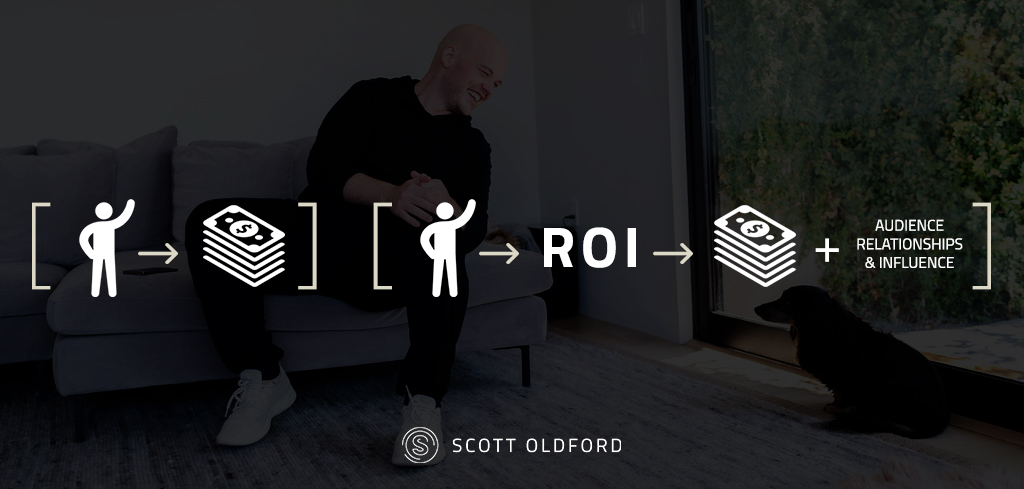
Having your audience will help you make more money, which gives you the freedom to do what you want and change the world in the process.
The question now is…
The Relevancy Funnel – How Does It Work?
We already know that we shouldn’t go after the Sidewalk people because they need a lot of convincing to acknowledge their pain and problem.
Going after the Fast Laners is going to be very expensive as well, so the best option is to go after the Slow Lane people.
So let’s say you have someone who comes to your funnel through any source (like Facebook ads).
This person comes to a Slow Lane piece funnel (more on the types of funnels for each lane later), at which point you’ll try to utilize all of the aspects of relevancy that we talked about in the relevancy section to have the right content at the right time and show your relevancy on the landing page, in your emails, in your videos, and so on.
You’ll then utilize omnipresence through different mediums you choose (like Facebook groups and email) to be top of mind and amplify your relevance.
You’ll use intimacy as well through Facebook groups and conversations so you can connect with them and be able to direct them to offers.
So in short, you need to get traffic, get them through your relevancy filter, then use omnipresence and intimacy to amplify your relevancy and build that connection and have conversations, and then show them your offers.
In theory, the process will look like this:
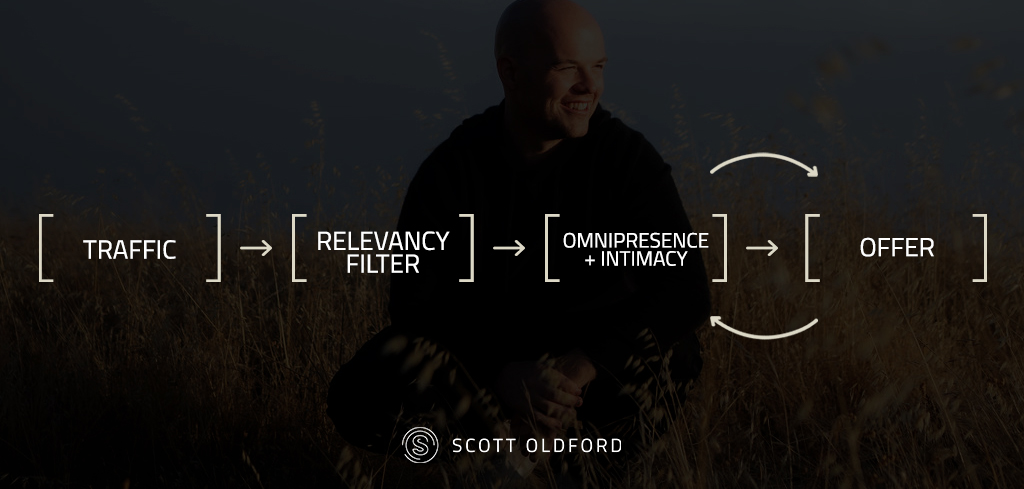
When you apply it, you’ll need to have Slow Lane content/funnels that you send your traffic to.
On the thank you page, you’ll gauge their interest and ask them to check out a Fast Lane guide (or other content on the thank you page), and then you’ll follow up by segmenting them based on their mindset and which lane they’re in, and in the process, you’ll be omnipresent and intimate so you can direct them to your offers.
This is the bird’s eye view of how things should be:
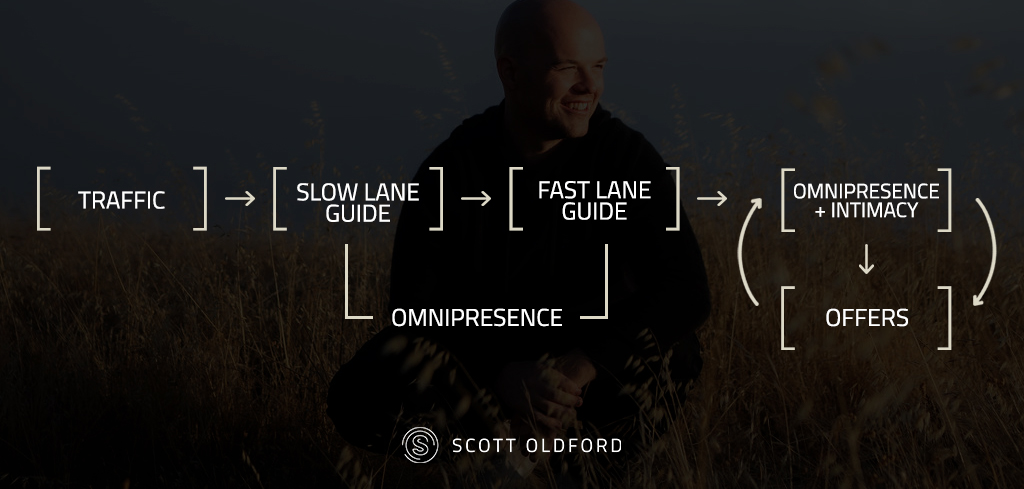
This is what funnels look like in a nutshell when you start using the Relevancy, Omnipresence, and Intimacy Method.
So we have a Slow Lane pillar content/guide/video.
This can be a post on my Facebook, a guide that you opt in to, or a YouTube video. Usually, I want people to opt in, so you’ll see me guide them to a specific opt-in that they may need to check.
When people come to check the content, and they want to go to the Fast Lane, I give them the opportunity by asking them to opt in for a Fast Lane freebie like a webinar or a training video.
If they don’t, I leave them in the Slow Lane and start indoctrinating those people by sending them emails, and I start being omnipresent to those people. I’m just sharing content from stage 1 & stage 2 omnipresence campaigns with them (the 0-14 and 14-60 days campaigns).
Whatever lane people are in, you need to talk mostly about that lane to them, though it is sometimes useful to remind them about the last lane they were in to reinforce their progress and remind them that they’re moving forward.
At some point, they’re going to come up to the Fast Lane.
You need to be giving them opportunities to check out Fast Lane content from time to time.
Once they start checking out that Fast Lane content and they take Fast Lane action, Fast Lane conversion funnels should be activated.
You’ll need to appear more in front of those people through other channels like email. Invite them to start conversations with you and start being empathetic. You need to give them opportunities to be customers.
If it doesn’t work, then you do further indoctrination, omnipresence, and intimacy, and then send them more opportunities further down the road.
Here’s a simple diagram to show you how it all works.
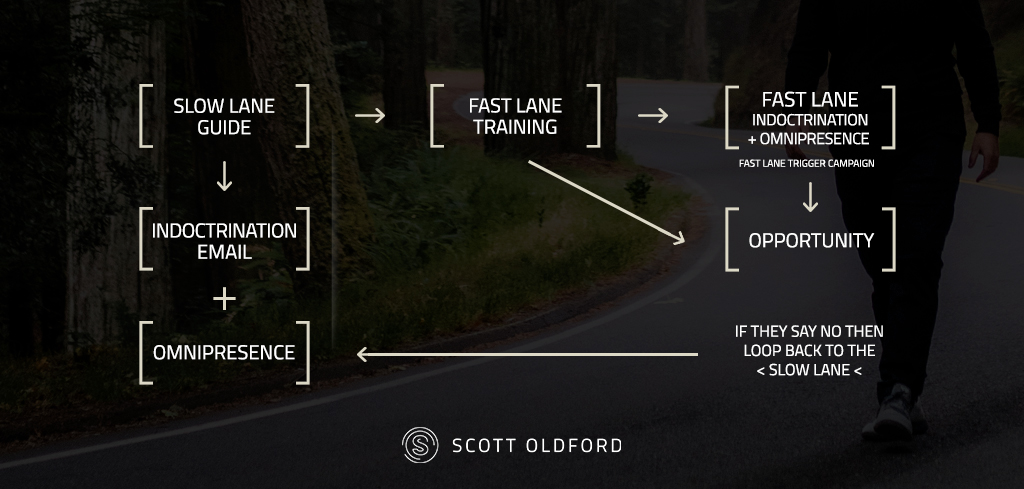
And I don’t do it in a complicated way where people are in a given lane and then they’re out or constantly reclassified according to complex metrics or anything like that.
I used to do that stuff back in 2016, but I don’t do it anymore. People are just tagged based on the content they checked out. So if they attended a webinar, they have a Fast Lane tag. If they checked out a guide, they would have a Slow Lane tag, and so on. It’s that simple.
So How Does It All Fit Together
As you can see, we didn’t talk about the technical parts of having a funnel because that is the least important part.
What you need is to have a holistic overview of your marketing and strategy, which is why I created the ROI method.
Marketing doesn’t need to be complicated.
You just need to be relevant to the audience, be omnipresent to them and have conversations with them.
A Funnel is just a tool to help you do that in a more systemic way.
If you want to know more about the ROI method, click here to check this in-depth guide about it.
And if you need more help with your marketing strategy, check out this page and let’s see if I could help you.

